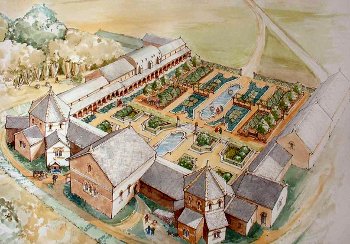
"England has one of the richest cultural landscapes in the world. It is an incomparable asset. It is valuable in its own right, provides the context and setting for our lives and delivers many wider social, economic and environmental benefits. It is key to urban regeneration and important in achieving a sustainable countryside. It is essential to our future, and, like any environmental capitol, we squander it at our peril" Sir Neil Cossons, Chairman, Historic England 2002.
The District of Bath and North East Somerset is no exception. It is rich in archaeological sites, monuments and historic landscapes covering all periods of human activity from the earliest prehistoric times to the present day. Bath & North East Somerset Council is responsible for:
- the maintenance and management of the Historic Environment Record;
- developing policies and strategies for the management and conservation of archaeological remains and historic landscapes;
- providing historic environment advice and guidance to the Council and to other organisations and individuals, particularly in relation to planning and development.
We hope that you find these pages interesting and informative and hope that you will continue to visit us.
Getting involved
We do not carry out archaeological excavations or other archaeological field work. We are not usually in a position to take on volunteers or offer paid employment in archaeology. Opportunities to get involved in archaeology locally are available through the Bath and Camerton Archaeological Society who run their own research excavations, with whom we have jointly been carrying out a research project at Stanton Drew, see Documents section on this page.
For people seeking paid employment in the Bath area, contact the following organisations:
Fieldwork opportunities are also advertised on the Council for British Archaeology web site.
Finds identification
We do not provide an object identification service for metal detectors or anyone else who is involved in finding archaeological objects. But we would be pleased to hear of any discoveries that have been made in the district so that we can record their locations. For further details refer to the Sites and Monuments Record pages. Object identification is sometimes carried out by Heritage Services through the Roman Baths Museum.
Metal detectorists can contact the Gloucestershire and Avon Finds Liaison Officer, Kurt Adams who carries out finds identification on a regular basis. He can be contacted by e-mail at kurt_adams@bristol-city.gov.uk or Tel: 0117 9222613. Further information on metal detecting and the law can be found at the British Museum's Portable Antiquities Scheme site.
